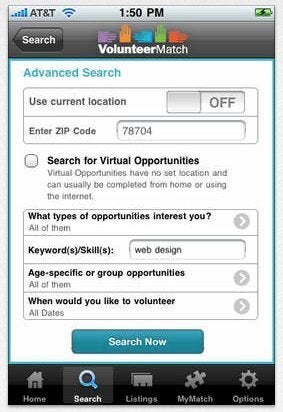
Organizations responsible for changing the world are facing increased competition to remain transparent, accountable and prove themselves worthy of donor dollars which decreased nationally by $2 billion between 2010-2013. Donors cited a distrust in the allocation of their dollars among the reasons guiding decreases in donations to charitable organizations.
Leaders of these organizations are finding themselves in the precarious position of dedicating a bulk of their time to fundraising and stewardship, rather than impact activities which redirects human capital away from the cause, creating a cycle of operational neglect.
After working with multiple non-profits and private sector companies to solve these challenges, I've learned that a little innovation can do wonders. So who better to look to than one of the most valuable and creative companies on the planet.
Here are five things that non-profit and charity leaders can do to earn public trust, increase impact and lead effectively based on Google's best practices:
1.Hire Different.
Google has one of the most unusual and innovative hiring practices. Its focus, according to the Senior VP of People Operations at Google, Laszlo Bock, is to recruit the best, the brightest and the most creative. They focus not so much on experience, but on what leadership attributes candidates can bring to the table through a series of scenario based questions.
Transferable skills from various industries are not frowned upon either, they're celebrated. They also appreciate generalists, those who excel at many things as they believe that emerging challenges will not always require the same leader and thus diverse skill-sets are more likely to solve common problems creatively. Candidates who have not only faced challenge, but have demonstrated creative ways of overcoming said obstacles are ranked extremely high for ability to adapt under pressure, work within a team and problem-solve. He explains it here.
2.Measure Different.
Non-profits think they're limited to traditional key performance indicators and surveys but social media offers free tools that can significantly increase a charity leader's ability to know what works and what doesn't. For example, YouTube allows any video-creator to track audience retention, a unique tool that indicates what specifically audiences want to see and what they don't want to see. For non-profit marketing, this is gold and can expand brand recognition, global reach and marketing for specific causes by putting a focus on quality.
3.Be Bold.
Non-profits often deal with some of the most depressing global and local challenges. Often times, barriers to change like systemic corruption and government red-tape are outside of the scope of many organizations. Due to fears of bad PR, losing funding and charitable status conflicts, many leaders feel muzzled. This repression of the truth often manifests into 'business-as-usual' within some organizations and staff begin to lose a grasp of what success looks like as what had initially attracted them to the organization seems almost impossible to achieve. Morale begins to decline and talent retention becomes an issue for senior management who find it challenging to motivate staff initiating the beginning of a bad cycle.
Although Google's mission is not social impact focused, it also had to overcome similar issues. It has mastered this by ensuring that senior leaders take stands on global issues, are present in the communities they serve and if necessary, counter the status-quo publicly in order to lead change and inspire others to do the same. Their company policy is user first. Unless your last name is Gates it's not advisable to go out and diss the global order or anything like that but bringing your calculated and tactical inner-activist out as a senior non-profit leader can work wonders for organizational profile, donor acquisition and your cause through greater public trust, leadership/brand establishment and overall uniqueness.
4.Retain Talent.
While the non-profit sector struggles to retain talent due to outdated HR policies, fierce competition and non-competitive salaries there's still an opportunity to improve. Google is leading the way in providing incentives to retain talent and better-yet, increase productivity. Massages, childcare, pet care, PTO, on-site recreation facilities and free catered lunches are just part of the perks of being a Google employees. No, I'm not suggesting that Oxfam and the United Way direct their budgets to free lunches or doggy daycare, what I am saying however is that the non-profit sector should take note.
Currently, non-profit policies in respect to talent acquisition and HR align closely to government, meaning they are unchanged and slightly old-school to say the least. Talented millennials whom non-profits are looking to attract gravitate towards work-life balanced and team focused environments; in return they deliver productivity when empowered due to their understanding of technical tools and collaboration. Similarly, generation X is growing tired of the typical 9 to 5 and is searching for a greater mission and pride in their work. This means that flex hours, work from home arrangements and additional benefits should not be taboo in the non-profit sector, they should be welcomed as they increase productivity where employees feel valued enough to go above and beyond.
5.Cultivate Innovation.
Google's not-so-secret Google X team consists of a group of experts in various technical fields who are dedicated to coming up with "the next big thing," one of their projects include the soon to be released self-driving car. Non-profits may not have the funds for such covert and bold operations but by relying on their human capital to conduct "hack-a-thon" like brainstorming sessions to come up with solutions to challenges they face can tighten office culture and even develop a ground-breaking solution for a sector that is in need of innovation, not just donations.
One of the most common responses to this is "they can do it because they're Google," and while this is technically true, it doesn't stop non-profits from innovating where they can with small if not free investments in their people to make their difficult work of changing the world, a little more efficient.
ALSO ON HUFFPOST:
